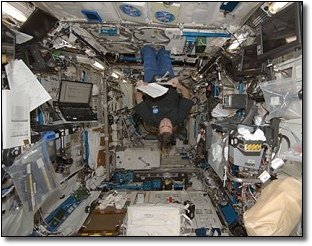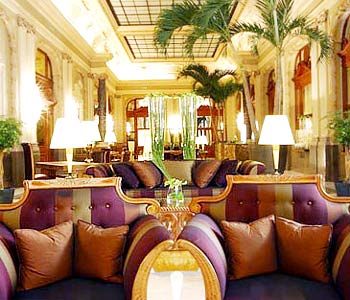Hey guys, just a quick follow up post. I really enjoyed this course and the discussion and casual nature really helped me approach the issues in new and interesting ways. I want to thank you all for you opinions and viewpoints.
Of the various texts we discussed in the course, my favorite by far was
Objectified. I thought it was an excellent way to start the course and really plant a lot of seeds of thought.
Overall, im going to take away a greater understanding of the importance of design from this course. The concept that everything around us is touched in some way by design is truly overwhelming thought.
Author Archives: ahf5012
The Vitality of Design
In reading Alexander’s discussion of living and dead spaces, I felt very hung up on his choice of terminology. Viewing design from new and interesting perspectives has very much been the theme of this course, but for this one, i felt that the concrete nature of the terminology was a little to cut and dry for me. A living thing is either alive or dead, however, in personify an inanimate object, a much greater degree of flexibility is available. I felt, therefor, that describing a quality or degree of life within a space is more to the point of the argument, so I set myself to exploring the idea of vitality within design.
The two main considerations that seemed most pertinent to me were in maintaining a sense of the natural and instilling life force into an environment. Though these stipulations may seem obvious, I felt that putting more specific conditions to them would help me hash out the subject to a deeper degree.
For maintaining a sense of the natural, I felt that it was more important that a space not feel overdesigned, rather than that it look as if it were a part of nature. Imitation of the natural order is achieved with far greater finesse when it need not limit itself to a certain “style”. I felt therefor that an environment that constructs itself as nature would is far more “natural” than one that actually looks like it is a part of nature. This meant that things like zoos, even with all the life contained in them were far closer to dead spaces to me than living.
Nothing makes a space feel more alive to me than by naturally filling it with life. In this sense, my most important question became, “how does the space encourage life?” I began looking at things from the perspective of human interactions, and more importantly, minimalism. For a space to be most alive, I feel that it must be a showcase of the human interaction within it.
My personal image of a space that has a great deal of vitality is therefore rather unconventional. I recently came across pictures of the interior of a space station. They are cramped and uncomfortable, and full of equipment. Every inch of these spaces are painstakingly thought out to maximize space and ensure that nothing goes wrong. While they are not bright, cheery places, they maintain two important aspects. They are carefully constructed to be as minimalistic as possible, and they focus on the humans within them in a way far greater than most spaces ever need to worry about.

For a space lacking vitality, I started thinking of images I had recently seen of luxury hotels. Their brightly colored lobbies, often brimming with artificial flora or unnaturally transposed potted plants, try loudly to suggest a sense of life. However, the interaction between humans in these spaces is limited to brief encounters with staff, and the true purpose behind their design is to provide spaces of solitude for large groups of strangers to seclude themselves away from eachother. This sense of engineered privacy stands completely counterpoint to my ideas of a living space.

Objectifying the Ghetto
Our Winner article discussed a number of different ways that technology can be political in nature and divided it’s discussion in to three distinct categories. Though I considered examples statecraft and engineering, I felt that statecraft was too innately political and engineering rather vague at times. Fascinated by the example from our lecture involving the bridges of Robert Moses, I reflected on other ways in which the overall design of the environment we live in could be used to oppress people.
Recalling my experiences with the film La Haine, I came to realize that the centers of urban decay in France were a prime subject for consideration. Not only is this a clear example of physical architecture being manipulated for ideological effects, but it satisfies something I’ve come to consider a prime requirement for our discussions in this course: objectivity.
In order for us to discuss the concepts in this course, we must be able to view that which is often mundane and everyday in a new light; to force ourselves to shed our preconceived notions and to look at things in new and interesting ways. Realizing this, I came to understand an additional nuance to the film we watched in class. An objective stance is one that attempts to view the facts and dispel one’s personal feelings from the consideration.
France’s slums, therefore, were an opportunity for me to look at an issue which is both familiar and relevant to my life as an American citizen, and distant in it’s unique and foreign aspects.
Political Architecture.pptx
Ultimately, I determined that the most uniquely different feature of France’s banlieue is its proximity to the city; pushed to the outskirts, rather than clustered in urban “centers.” And that this feature of the banlieues was a natural progression of the socio economic development of the city in regard to a sense of chronology.
Where American cities formed around growing populaces of low wage laborers, their suburbs developed in response to the birth of the automobile and its restrictions (an elitist technology) to a higher wage earning client base. Conversely, France’s low wage earning majority arrived at a time after the cities layout had been created and simply had nowhere within the confines of the city to establish themselves. This, coupled with the active architectural choices of political bodies, created a system of meager living conditions for the financially distraught, largely immigrant population. Not only are these second class citizens relegated to a lower standard of living, but their engineered alienation causes a damaging sense of disenfranchisement fostering an atmosphere of resentment and violence in an abject youth community.
Screens and the future of interface
I was walking to class on thursday when I got hit by a car.
–Okay, not quite hit by i did get my foot run over as i blindly walked into an alley while texting on my phone. This near catastrophe resulted in little more than two startled people who will both be more careful in the future, however, later in class i began to think about its implications.
I can walk home from work while looking at my phone and not even recall the walk. Its as if my brain goes on autopilot (a noticeably less careful operator) and my cognitive processes focus on the phone. In class we were discussing the limitations of a rectangular screen, and it occurred to me that the blurring of boundaries, or the transcending of the limitations of a screen, is something i already experience.
When i get involved in a piece of media (media being anything from television shows, to books, to internet sites) my mind has the tendency to ignore physical medium. This is especially true for books, wherein the experience of reading is not in looking at a page but in formulating the thoughts and images described therein.
Peoples’ interaction with technology in our current era is almost exclusively limited to screens. Your computer, television, cellphone, wristwatch (does anyone still wear watches?) and even microwave require that you look at a screen to use them. Many theorists suggest that in the future our interface with technology will be far more internal than external.
Science fiction has been toying with this concept for decades, and the example most familiar to people is The Matrix. In this model an entire world is projected directly into the human consciousness. Though an entirely artificial “reality” is unlikely in our lifetimes, progress is already being made in the realm of “augmented reality“.
Augmented reality is an attempt to blur the line between our world and the world of information. As layers are added to these systems of tagging and analyzing our real world, complex webs of information are formed. In essence, this is an attempt to write media that exists off of a screen, though our current interaction is limited to experiencing it on the screen. But who knows, that next innovation may be just around the corner, and its likely Apple will hold the copyright.